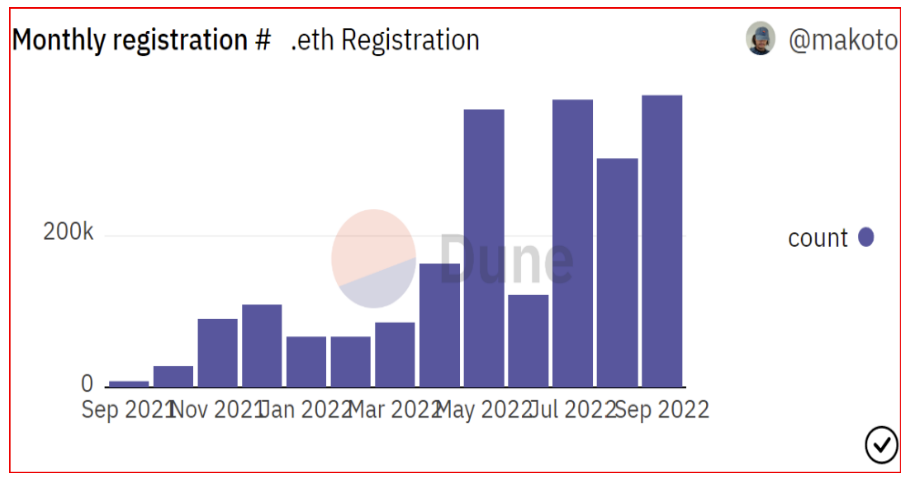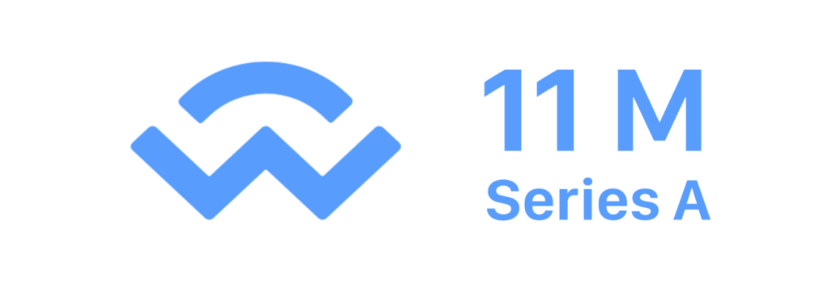Original link: https://www.hellobtc.com/kp/du/09/4010.html
Author: Terry / Source: Vernacular Blockchain

Author | Terry
Produced | Vernacular Blockchain (ID: helloBTC)
With the Fed raising interest rates and the transmission of pessimism in the macro environment, the encrypted secondary market has been significantly deserted recently, and the Web3 narrative has not seen a burst point that can obviously ignite emotions.
The good days of incremental growth in the past have gradually become good memories, and the Web3 world is increasingly facing its own unique traffic dilemma .
Therefore, “overwintering” has become the main theme of a number of new and old Web3 projects. When everyone is preparing to frugal food and clothing, as the elephant in the room, what Web3 products have already landed? What experiences and values do they have that are worthy of reference?
01
Basic application level
Let’s not talk about the B-side (such as The Graph), here we only take stock of some basic Web3 product applications that are familiar to everyone and have a high user penetration rate.
1) ENS
As the underlying basic protocol closest to the decentralized identity (DID) form in the Ethereum ecosystem, ENS is undoubtedly one of the most typical Web3 Native products.
In the more than 5 years since its launch, ENS has gradually developed from the original Ethereum address resolution to a business card in the Web3 world, and its popularity this year has laid the foundation for its Web3 infrastructure.
As of the end of last month, the total number of ENS domain names reached 2.17 million. Now that September has not yet ended, the number of registrations has surpassed that of July and reached 380,000, hitting a new record high. Good entrance.

More importantly, its ability to cover users is also increasing. Previously, the Ethereum Foundation, the Ethereum Domain Name System ENS, and the digital identity authentication company Spruce jointly launched a website login.xyz to track the progress of “Sign-In with Ethereum”. Sign-In with Ethereum” is a set of technical specifications for logging in to third-party web applications through an Ethereum account, enabling users to control their digital identity through an Ethereum account and ENS configuration file, rather than relying on traditional middlemen.
It is currently used in Web3, and aims to standardize with best practices to make Web2 services easier to adopt, and decentralized domain names such as ENS are not only used for addresses, but will also cover all aspects of DApp services in the future .
2) Mirror
Although compared to 50 million creators, Web3’s user volume is still insignificant.
But when we see more and more “small essays” inside and outside the circle on Mirror, it also shows from the side that it has gradually become the main venue for Web3 version content and public opinion.
Not long ago, Mirror also opened the Web3 subscription and comment service. The new function allows readers to subscribe and comment on the content published by Mirror with their wallets. It also means that allowing wallet-based subscriptions will be able to be combined with other tools commonly used in Web3 to enable such as Features like community chat, token gating, and community analytics dashboards.
3) MetaMask
Wallets have always been regarded as a super entry point for Web3 traffic, and they also have a user volume that other Web3 applications cannot match, even though it seems that there are limited and difficult ways to monetize.
The well-deserved top MetaMask official data shows that as of March 2022, MetaMask has reached 30 million monthly active users, which is a data that can be taken out even in the Web2 world, not to mention Web3 .
You must know that OpenSea, the top Web3 application, has achieved a growth miracle in 2021, with a transaction volume of 14 billion US dollars, but it only has about 250,000 active buyers and sellers, and 70% of the transaction volume comes from only about 20,000 users.
In the first half of this year, Joe Lubin, the CEO of ConsenSys, the development company behind it, confirmed that MetaMask will issue Tokens . Next, with the launch of Tokens, MetaMask’s leading position will be further consolidated, and the number of users can be foreseen in the future. Web3 top card.
4) Dune
As a leader in the field of blockchain data analysis tools, Dune believes that it is a must-have website for most Web3 users, and there are enough multi-dimensional data charts covering DeFi, NFT, etc. to choose from.
At the beginning of this year, Dune, which was founded only 3 years ago, also completed a Series B financing of 69.42 million US dollars at a unicorn valuation (1 billion US dollars). Regardless of whether Dune will issue Tokens or not, register an account and go to the top to build a model by yourself. Your own data dashboard is a great experience for exploring Web3.
In fact, Web3 products such as ENS, Mirror, MetaMask, and Dune are gradually evolving into the core infrastructure that is indispensable in the subsequent evolution of Web3. The most direct trend is that a number of Web3 projects have begun to build on these foundations. above facilities.
In short, they are playing the role of low-level components – with these Web3 application leaders as the center, the Web3 projects surrounding their tool classes and application layers are also continuously derived, and more advanced functions are continuously enhanced.
Just like ENS Vision on ENS and hundreds of Web3 projects integrated with the ENS protocol, or askmirror on Mirror, etc., these leading applications in the Web3 world are gradually spawning new and vibrant worlds.
02
Basic protocol level
1) WalletConnect
I believe that all Web3 users are familiar with WalletConnect, and even if they are not clear, they have used its products and services with high probability:
In addition to MetaMask, when using imToken and other mobile wallet applications to log in to Web3 applications, the code scanning format used is based on the WalletConnect protocol support.
On March 9 this year, WalletConnect completed an $11 million Series A financing, which was used to “develop a general messaging layer for Web3.”

WalletConnect believes that Web3 is not complete without the three pillars of decentralized infrastructure: blockchain, messaging and storage. To realize the vision of “a universal messaging layer for Web3”, WalletConnect introduces two new protocols :
-
Direct messaging protocol that enables WalletConnect wallets to send messages to each other
-
A push notification protocol that supports DApps to notify users of off-chain and on-chain events
In this way, information communication between wallets and wallets and notification pushes between wallets and users can be realized. Basically, it covers the basic service scenarios for users to communicate with each other on the chain. It is expected that it will further become the basis for daily use of Web3 users. product.
2) IPFS
As a key infrastructure for building a Web3 world, IPFS stores user data in distributed servers to ensure that data will not be controlled by a centralized organization, which can effectively prevent user data from being tampered with and protect the originality of data.
At the same time, the distributed redundant architecture avoids large-scale data loss, and greatly reduces the hosting cost of the centralized platform by encouraging a wide range of nodes to participate.
Although the performance of the IPFS-based Filecoin Token (IPFS is the protocol layer, and Filecoin is just one of the incentive layers) is disappointing, in fact, we usually use IPFS services consciously or unknowingly, including behind every small picture we buy , may all be decentralized storage through IPFS.
Just like the gradual formation of the application layer, Huddle 01, NFT.storage on IPFS, decentralized cloud disks Ardrive, KYVE on Arweave, etc., are also undergoing further development among these small ecosystems. vertical and horizontal”.
03
Where are Web3 products going?
When sorting out applications that already have a certain user base, I believe that everyone has found that the underlying logic of Web3 is completely different from that of Web2. The most direct one is that there are many products (at least in the short term) that seem to have no profit logic, and even more inclined to public products. The underlying protocol of nature.
The so-called “fat protocol” and “thin application” theory of blockchain:
Previously, in the Web2 world where private domain traffic was king, whoever could staking a horse and gather enough private domain traffic would be able to get the maximum benefit, and everyone at the protocol layer was reluctant to develop, because development was not easy. make money.
This has led to the formation of a fat application and thin protocol situation in Web2. Everyone is striving to become a super APP, and “fat applications” are king – WeChat, Alipay, Meituan, etc., are becoming more and more bloated and bloated. circle in its own application.
With the rise of blockchain and Web3, the logic has obviously flipped – products in the form of underlying components or middleware are becoming more and more popular, which can be inserted in the form of “building blocks” or used as the underlying infrastructure. in order to obtain the maximum aggregate income,
This is also a clear and visible trend of the increasingly prosperous Web3 ecosystem. More and more Web3 “tool applications” are centered on a single underlying “super Web3 basic application” to assist it in improving richer advanced derivative functions , relying on the underlying The “Super Web3 Basic Application” developed and expanded, and eventually fed back the underlying “Super Web3 Basic Application” to achieve greater empowerment, thus gradually producing a unique and self-contained “small ecology”.
This article is reprinted from: https://www.hellobtc.com/kp/du/09/4010.html
This site is for inclusion only, and the copyright belongs to the original author.